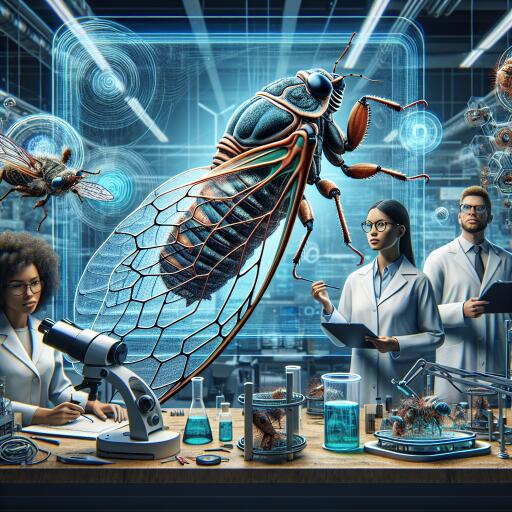Innovative Collaboration Brings Cicadas to Life in 3D
Thanks to a pioneering initiative, detailed 3D data of cicadas are now accessible to the global audience, aligning with the rare simultaneous emergence of Brood XIX and Brood XIII cicadas. At the helm of this inventive project is Michael J. Bennett, the director of the Digital Imaging Lab at the University of Connecticut (UConn). Bennett has mastered a revolutionary method that converts two-dimensional images into high-resolution, three-dimensional models.
The journey began when Bennett, intrigued after working with Anthropology Professor Christian Tryon on capturing images of North African stone points, discovered an opportunity to apply this technique to insect specimens. This realization came after reading about the work of Chris Simon and John Cooley, renowned cicada experts from UConn’s Department of Ecology and Evolutionary Biology, following the Brood X emergence in 2021. “It clicked that this technique could also be applied in a different context using insect specimens. I reached out to Chris and John about a collaboration, and it has been super working with them ever since,” Bennett shared.
The lab’s mission includes experimenting with advanced imaging techniques and applying them to new contexts. The 3D models represent male and female specimens of all North American periodical cicada species, allowing detailed examination, visualization, and annotation of their morphological features. These models are freely available, enhancing both educational and research opportunities.
The creation of these models involves a unique blend of macro photography and extreme close-range photogrammetry. Although not the first to combine these techniques, Bennett believes they’ve pushed these methods towards a new level of automation and computational refinement. The detailed process achieves sub-millimeter accuracy, and so far, sixteen specimens have been digitized, generating over 6.3 terabytes of data. This data is uploaded to the Internet Archive for open access, while the UConn Library’s Digital Imaging Lab Sketchfab website hosts the smaller, derived 3D model files.
These 3D models can be interactively explored online, allowing users to zoom, pan, and adjust lighting to examine the cicadas as if holding them in hand but with magnification far beyond what the human eye can achieve. Bennett’s work has attracted attention, leading to journal publications and presentations, including one at the Getty Center, on his data acquisition, rendering, and management techniques. UConn Library’s Head of Communication and Marketing, Jean Cardinale, lauded the project for demonstrating the library’s role in generating original digital content.
However, the project faces challenges, particularly in data storage and the efficiency of data sampling and computation. “Data acquisition is the main bottleneck because of the sheer number of needed source images,” Bennett explained, adding that the technique’s high-detail requirements necessitate extensive image capturing and processing.
Despite these hurdles, the potential for adding more specimens, especially from this year’s emergence, is exciting. Chris Simon expressed enthusiasm about the web availability of these images and looks forward to expanding the archive with fresh, brightly colored specimens.
Beyond cicadas, Bennett’s future projects include aerial imaging of campus buildings, leveraging his FAA-certified drone pilot skills. So far, prominent UConn structures have been modeled, and Bennett eyes more ambitious projects, like imaging the lighthouse at Avery Point, pending necessary clearances.
These 3D visualizations of cicadas offer novel insights into their intricate world, promising to enhance research and educational opportunities. Bennett’s work exemplifies the innovative potential at the intersection of technology and biology, opening new avenues for understanding and appreciating the natural world.









